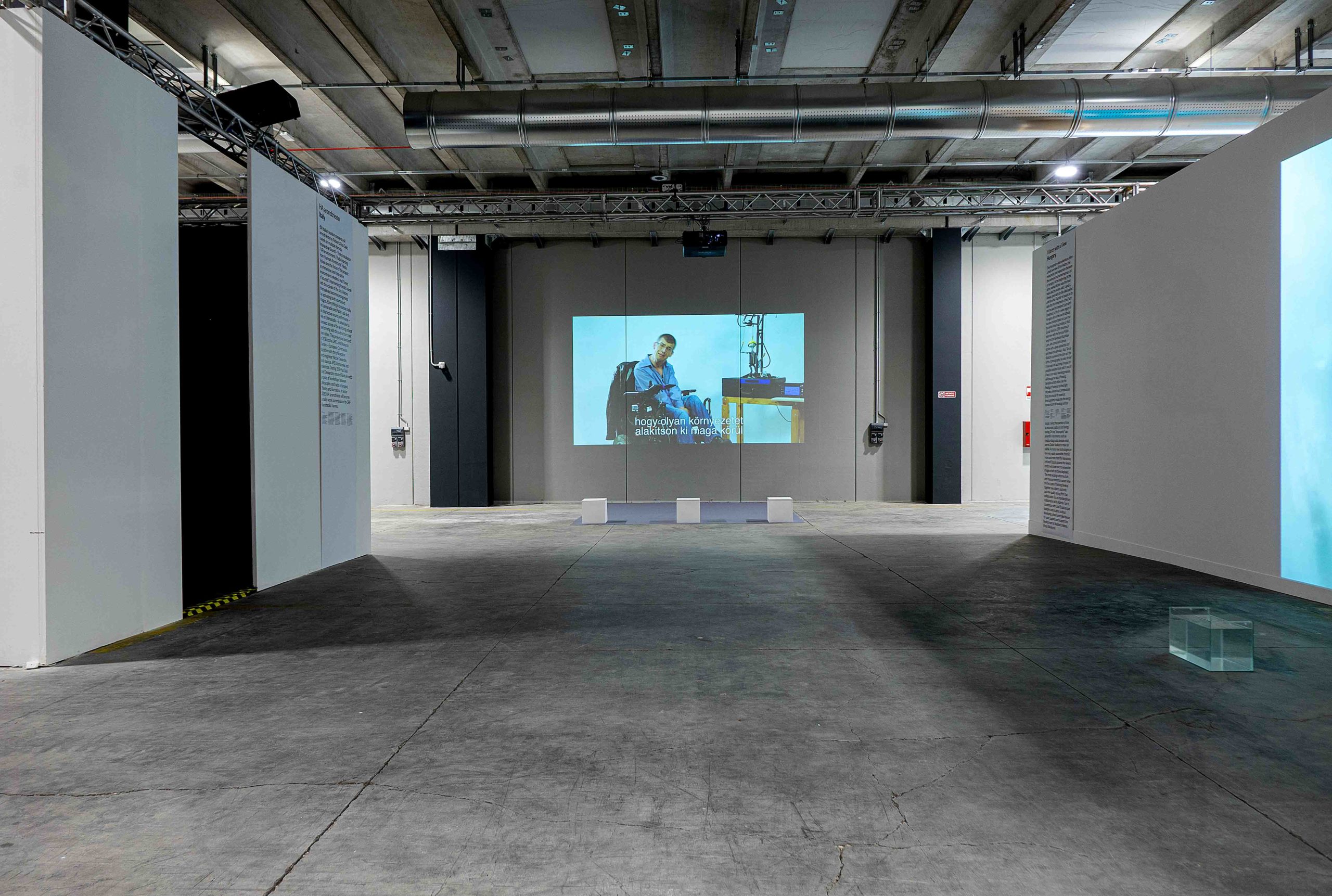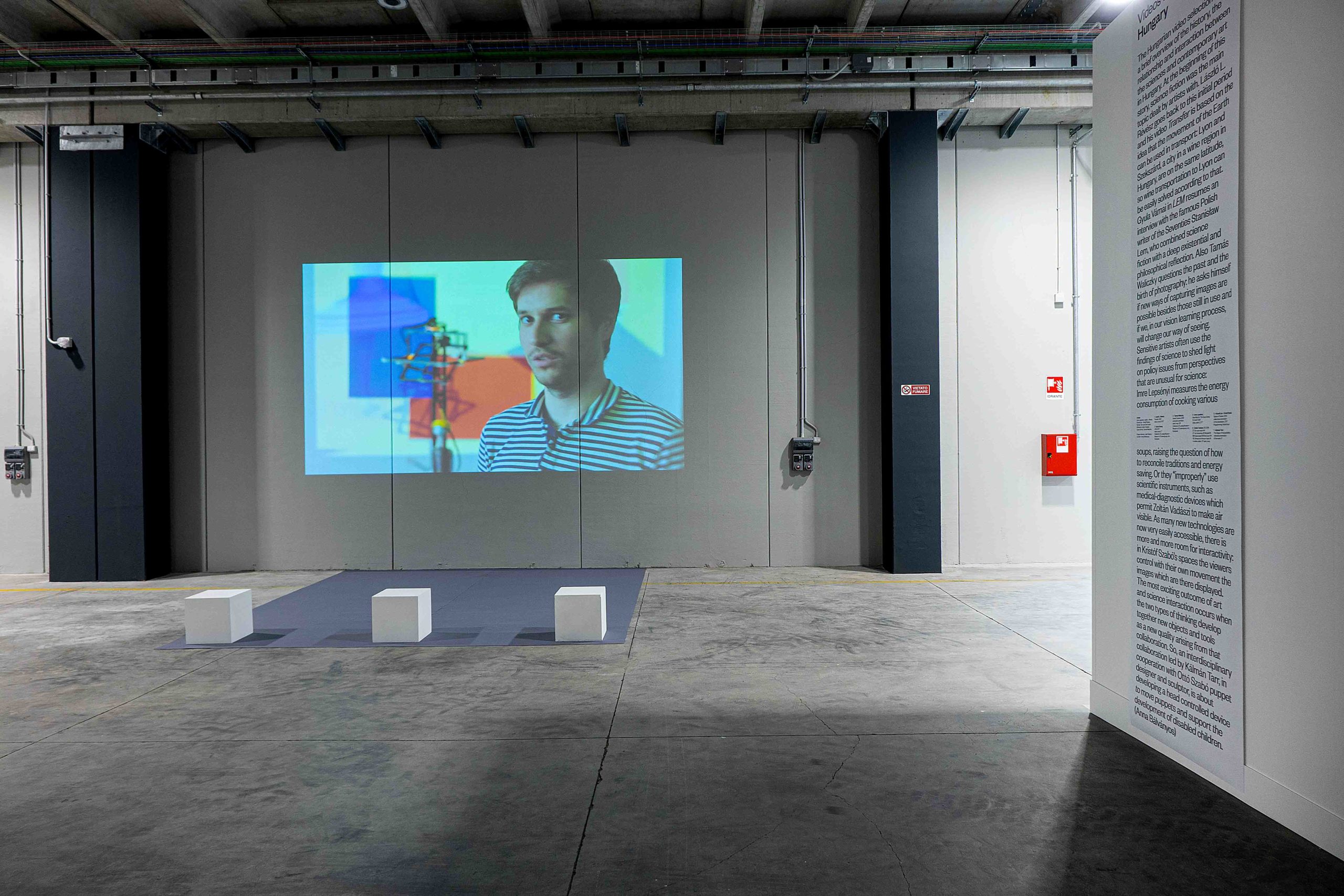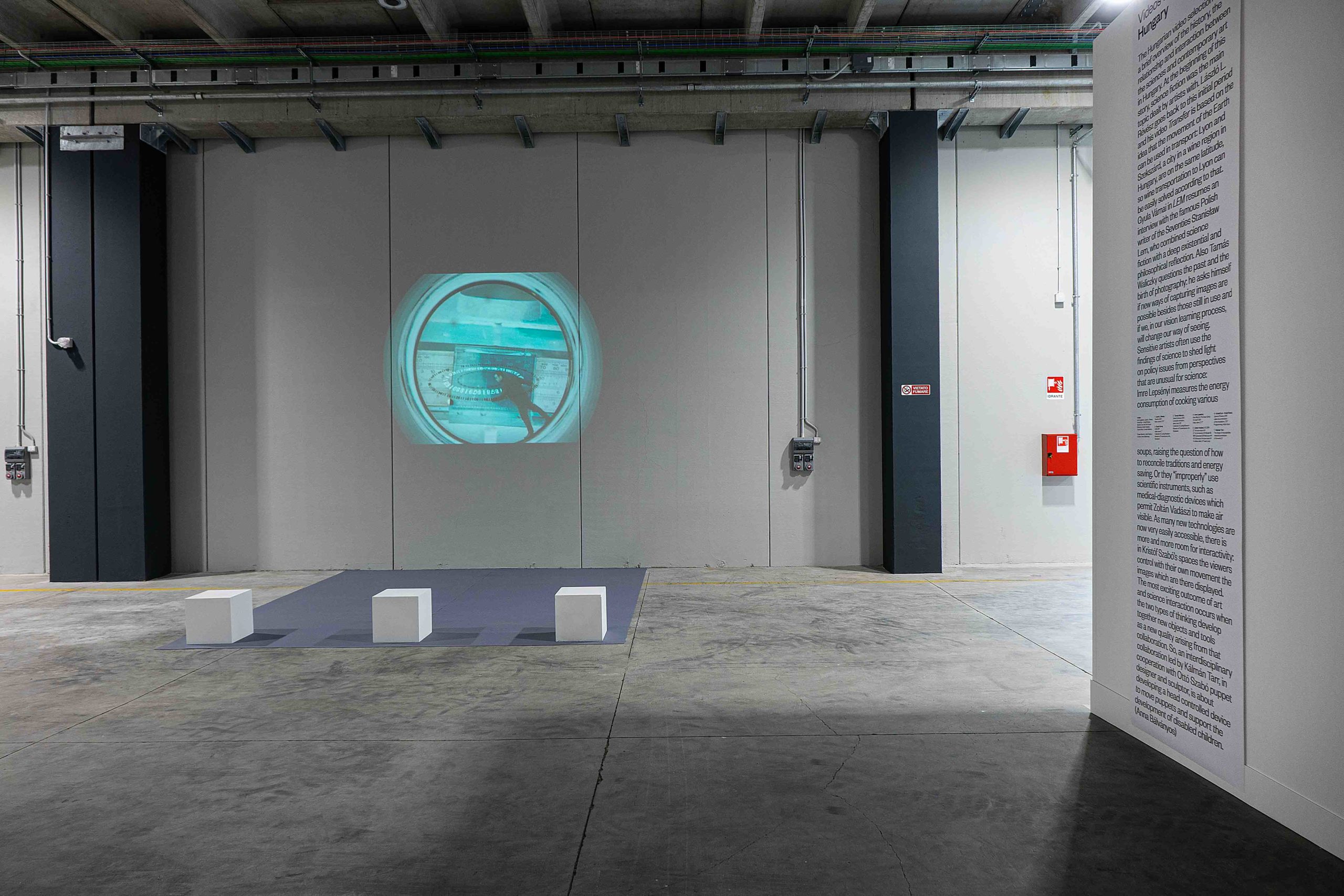both ways: hungary


 photo Marino Ierman, courtesy Trieste Contemporanea
photo Marino Ierman, courtesy Trieste Contemporanea
Link to the virtual exhibition: http://bit.ly/bothwaystrieste
Artists
Imre Lepsényi, László L. Révész, KristófLab– Kristóf Szabó, Kálmán Tarr and Ottó Szabó, Zoltán Vadászi, Gyula Várnai, Tamás Waliczky.
Project director: Julia Fabényi / Curator: Anna Bálványos.
The Hungarian video selection offers a brief overview of the history, the relationship and interaction between the sciences and contemporary art in Hungary. At the beginning of this story, science fiction was the main topic dealt by artists with. László L. Révész goes back to this initial period and his video Transfer is based on the idea that the movement of the Earth an be used in transport: Lyon and Szekszárd, a city in a wine region in Hungary, are on the same latitude, so wine transportation to Lyon can be easily solved according to that. Gyula Várnai in LEM resumes an interview with the famous Polish writer of the Seventies Stanisław Lem, who combined science fiction with a deep existential and philosophical reflection. Also Tamás Waliczky questions the past and the birth of photography: he asks himself if new ways of capturing images are possible besides those still in use and if we, in our vision learning process, will change our way of seeing.
Sensitive artists often use the findings of science to shed light on policy issues from perspectives that are unusual for science: Imre Lepsényi measures the energy consumption of cooking various soups, raising the question of how to reconcile traditions and energy saving. Or they “improperly” use scientific instruments, such as medical-diagnostic devices which permit Zoltán Vadászi to make air visible. As many new technologies are now very easily accessible, there is more and more room for interactivity: in Kristóf Szabó’s spaces the viewers control with their own movement the images which are there displayed. The most exciting outcome of art and science interaction occurs when the two types of thinking develop together new objects and tools as a new quality arising from that collaboration. So, an interdisciplinary collaboration led by Kálmán Tarr, in cooperation with Ottó Szabó puppet designer and sculptor, is about developing a head controlled device to move puppets and support the development of disabled children.
(Anna Bálványos)
Read more: https://www.triestecontemporanea.it/en/event/both-ways-2/